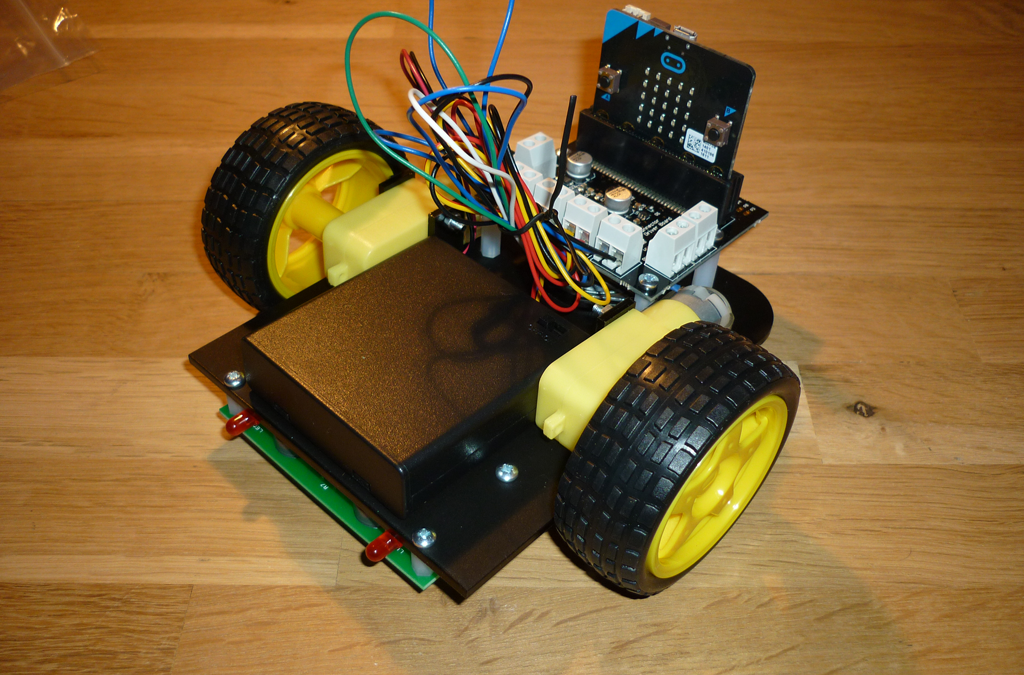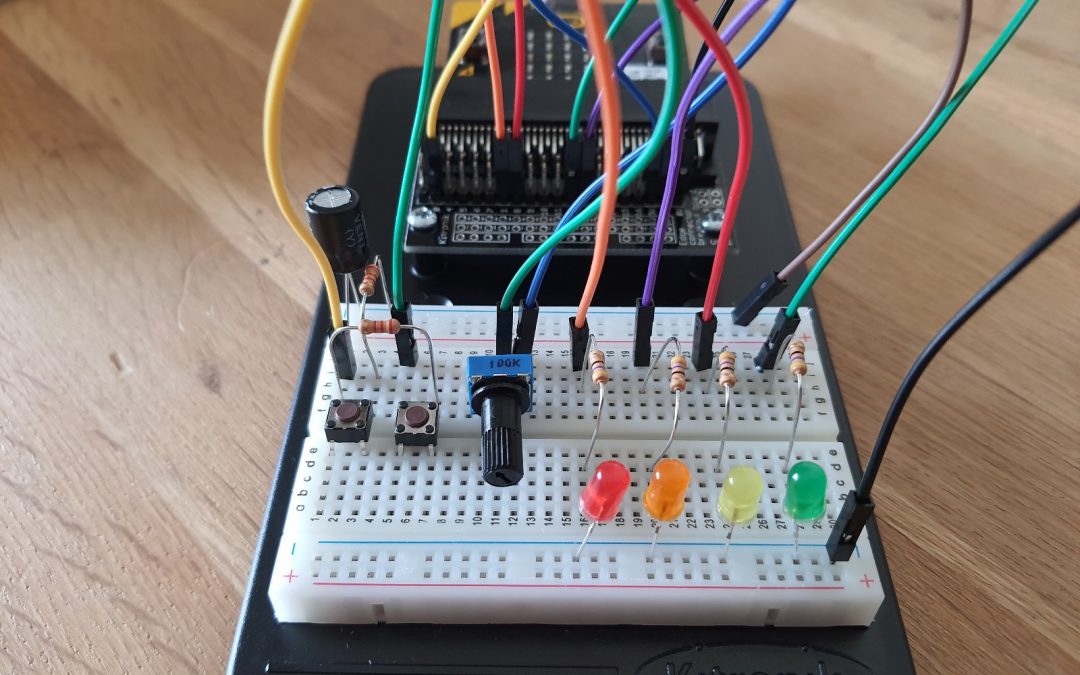
by richard | Oct 17, 2019
Hello World – Coding with MakeCode In this project you’ll learn how to create your first program using MakeCode, a block-based coding tool, and how to download and run it on a micro:bit. You’ll need: A computer and browser to access MakeCode at...

by richard | Oct 11, 2019
In this project we set a special LED to a range of colours. Some LEDs can display more than just white light. Some can display a range of up to 16 million colours. You’ll need: A micro:bit An a colour LED on a board such as the Kitronic RGB...

by richard | Jan 18, 2018
In this project we create some colourful patterns using a set of LEDs. These are special LEDs that can display a range of up to 16 million colours. You’ll need: A micro:bit An LED matrix such as the Kitronic ZIP Halo:...

by richard | Jan 18, 2018
In this project we learn how to code our buggy to follow a course made from a dark line on a large white sheet of paper. To start with we need to know how the buggy works. 1. How does it work? Motors The two motors are quite simple. They are connected by two wires to...






Recent Comments